
Inge Vaandering
Internship: Jan-Jan van Essche
inge.vaandering@gmail.com
www.instagram.com/ingevaandering/
exposed.kabk.nl/2020/graduates/inge
In my work, the human senses are an important element. The pieces should not only be immersive for the wearer, but also for the spectator. Therefore, I focus on the conscious and or microscopic experience by enhancing the relationship between material, immaterial material like light and shadow, senses, and context. I want to temporally impose people to apperceive and converse with my work, which supports the performative character of the material or object. The spectator should have a dialogue with the material, as it has its own entity.
To get in contact you can reach me at inge.vaandering@gmail.com
GRADUATION PROJECT
STICKY FINGERS / An Act of Matter
Sticky Fingers evolved from exploring the character of materials, enhancing the tactile traits of the matter - which can be soft or sticky, or responsive to light and shadow. These traits led to the shapes of the silhouette. The eyes of the skin by the architect Juhani Pallasmaa is an essay that explains how we use our senses and underlines the dominance of the eye. To me, it was an explanation of how I look at the use of our senses. It made me want to question the role of our senses even more. I’m interested in shifting focus from sight to a more bodily perception, which, at this point, mostly includes - the idea of - touch and sound. Also, the magic realism works of painter Pyke Koch are a great source of inspiration for me. By using, for example, a different stance than usual he draws attention to the atmosphere or tactility of the painting and pulls the viewer out of reality for a bit. Something is a little bit off or unusual. Although its mostly visual, the tactility of the objects or figures in the paintings are very present. In my collection, you find shapes that are often inspired by the simple and functional labour, home, and evening wear from the olden days. The materials used are either quite unusual or more neutral. Fabrics like cotton velvet are dyed and manipulated - inspired by circus and burlesque. Pieces of wool, treated with latex rubber, are crafted in a poncho. Thin paper is glued to cheesecloth and shaped as a parka, which is providing a pleasant noise. By using imagination and everyday images I try to find the tension between garments, objects, and people which should lead to a more imaginative and conscious perception of our feelings and surroundings.
Film by Vladimir Vidanovski, edited by Ivor Borovecki and Vladimir Vidanovski Performer: Tess Voelker
Pictures by Laura Luca, Charlotte Brand and Inge Vaandering Model: Laura Snijders
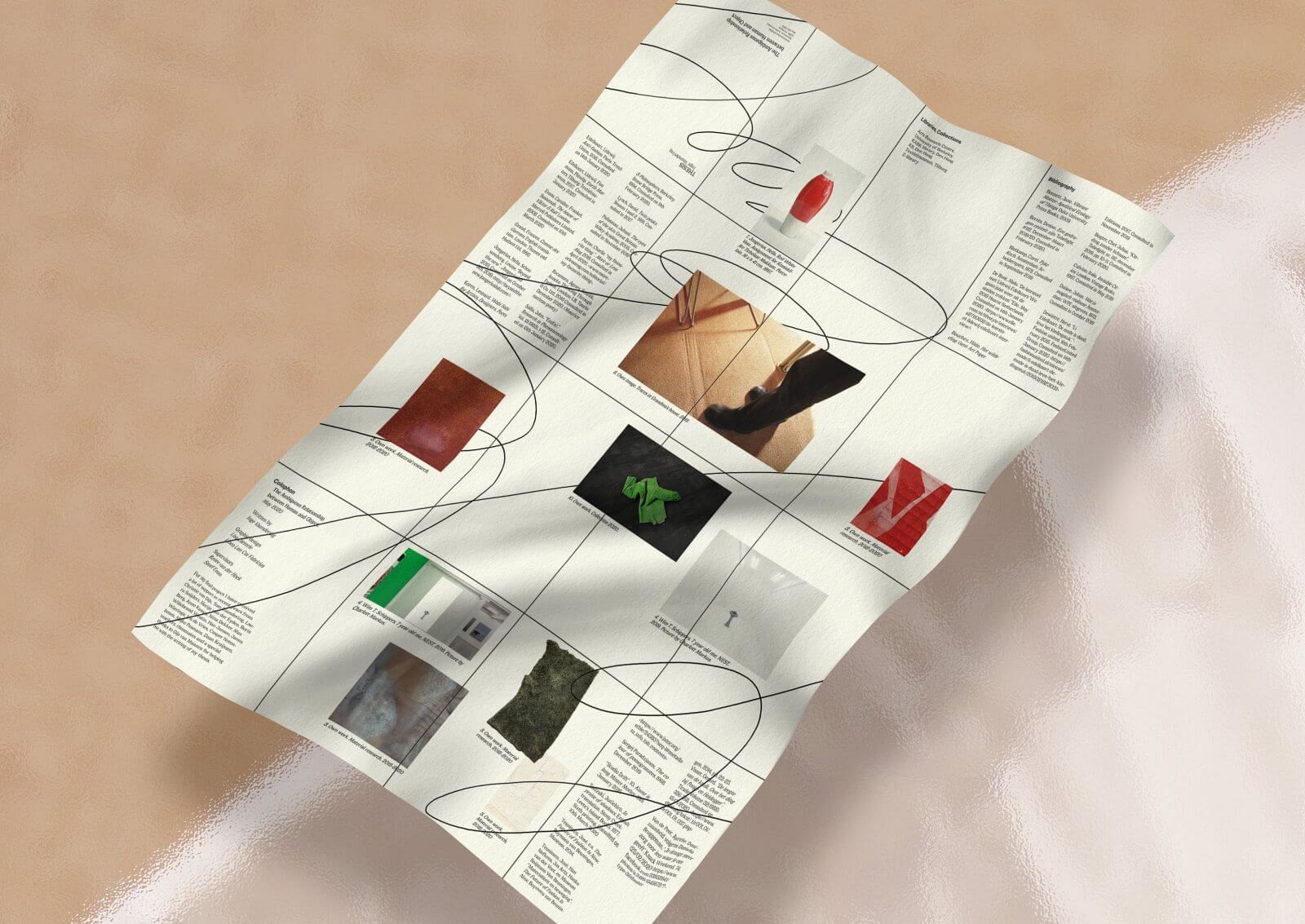
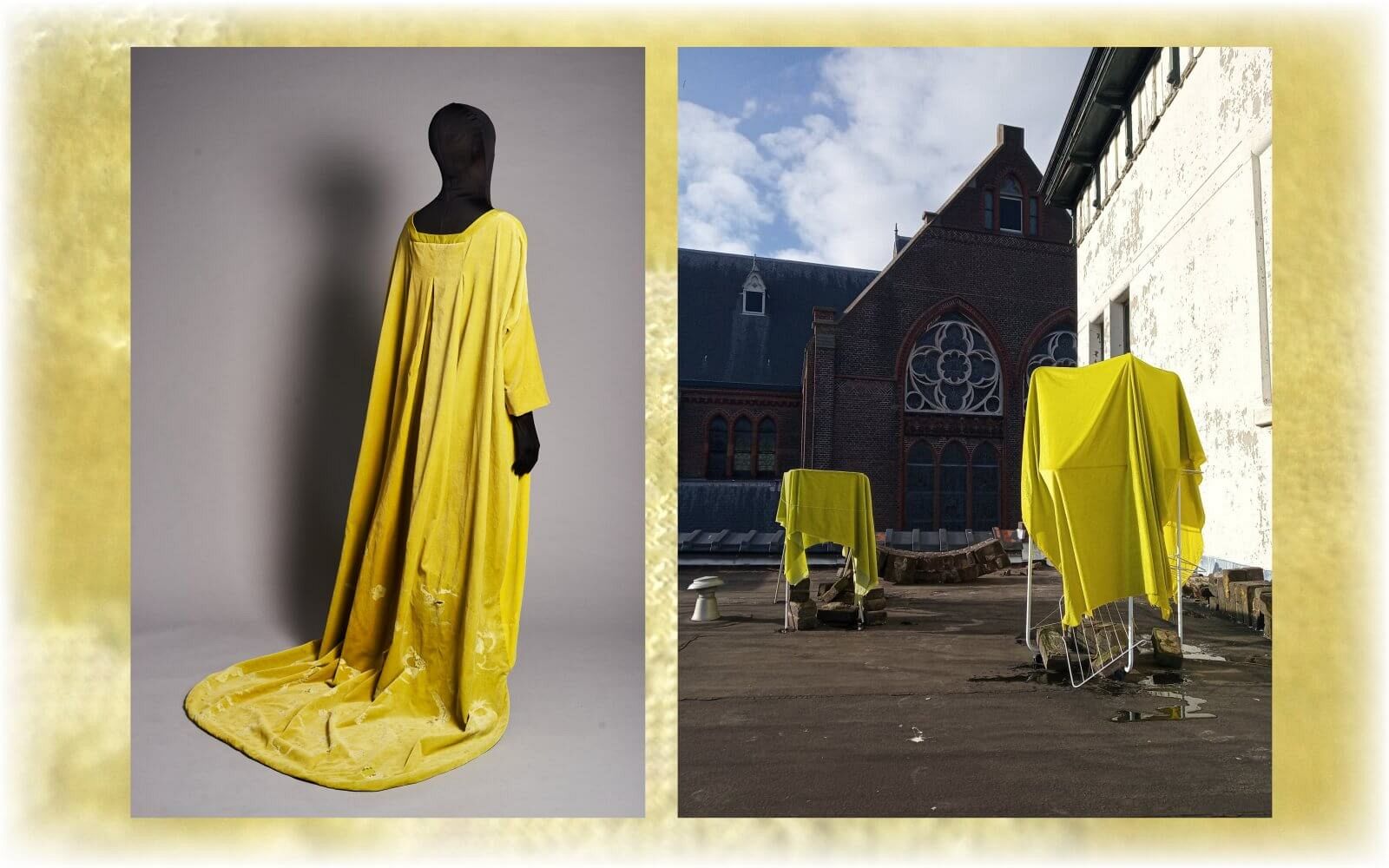

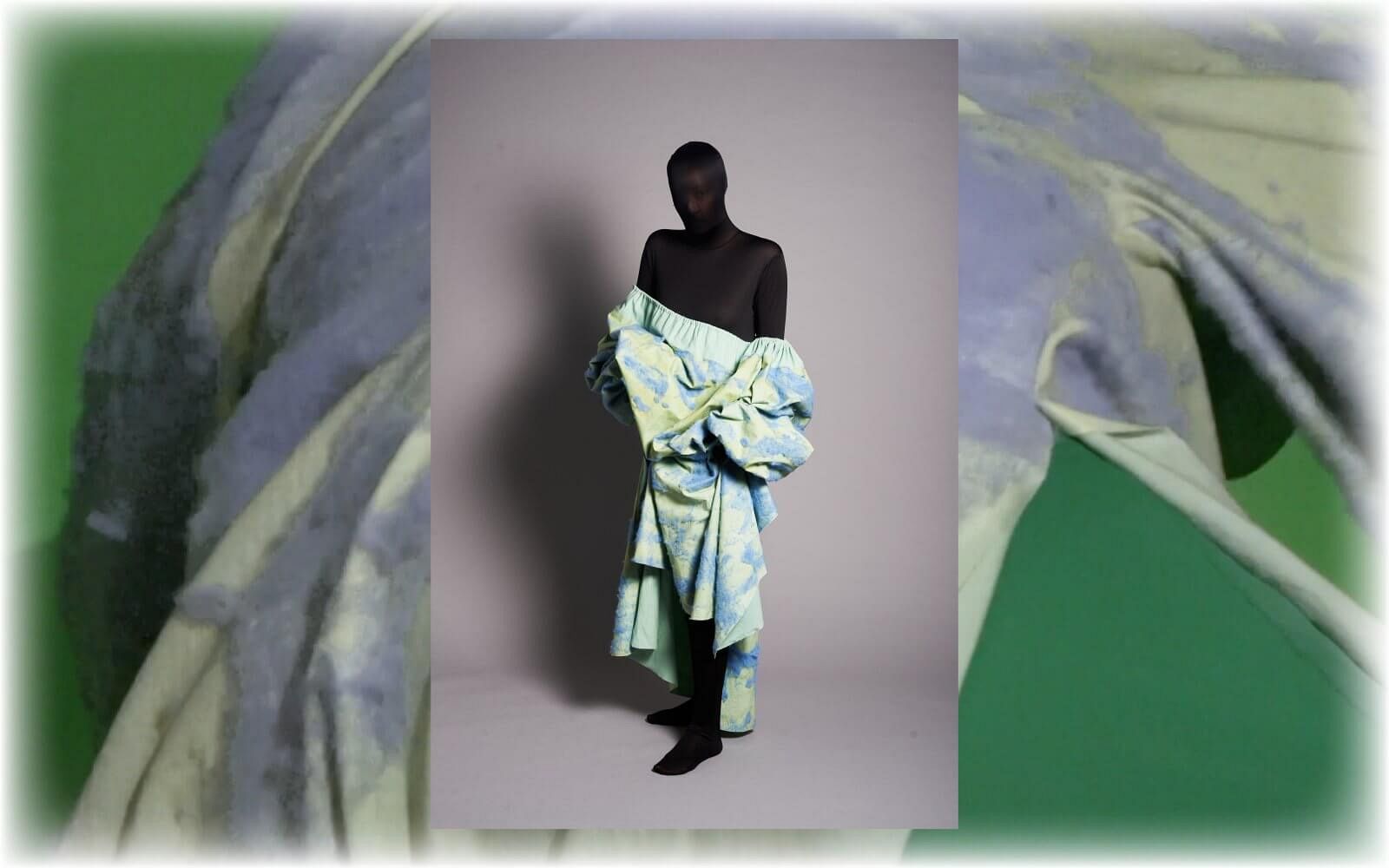
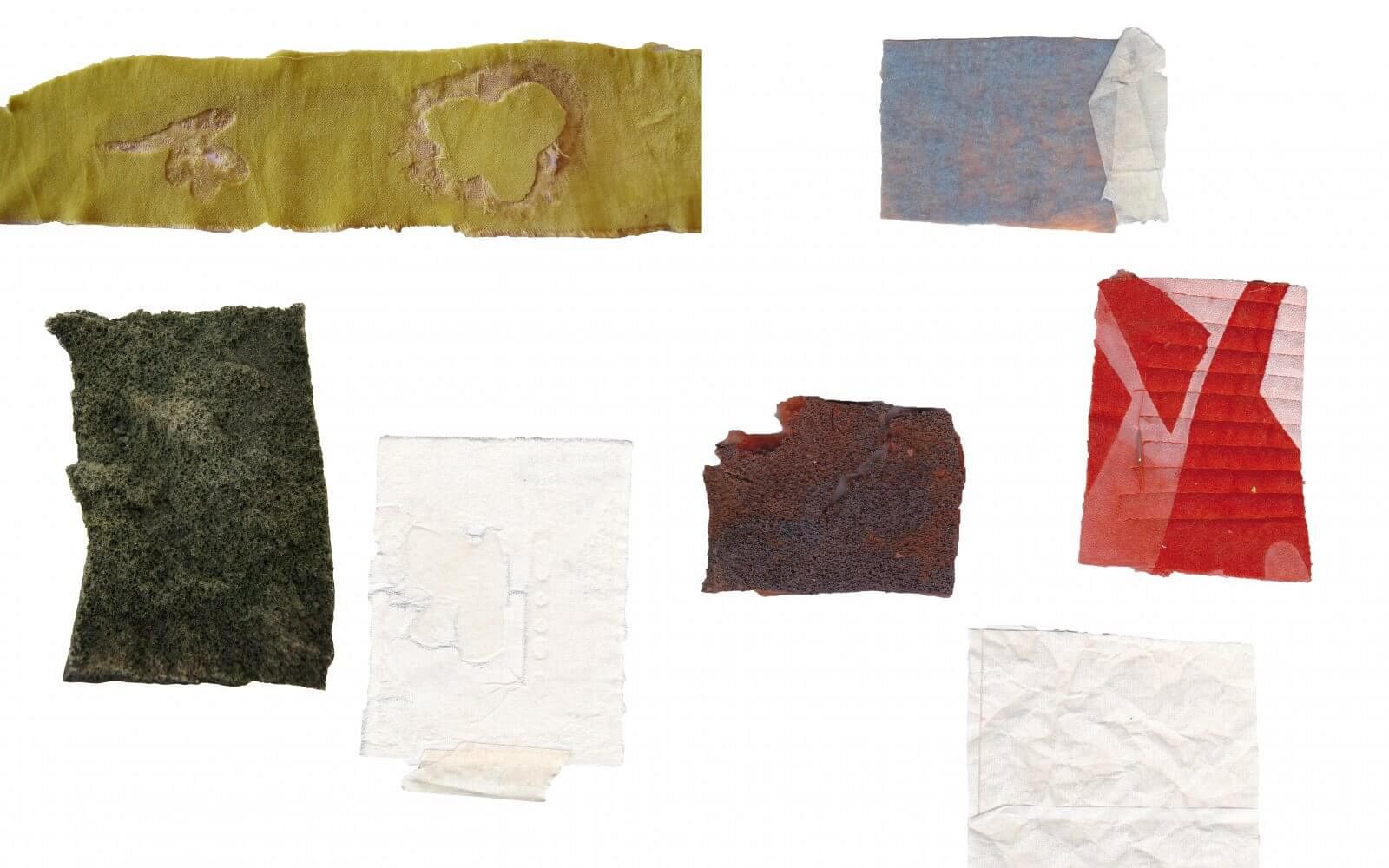
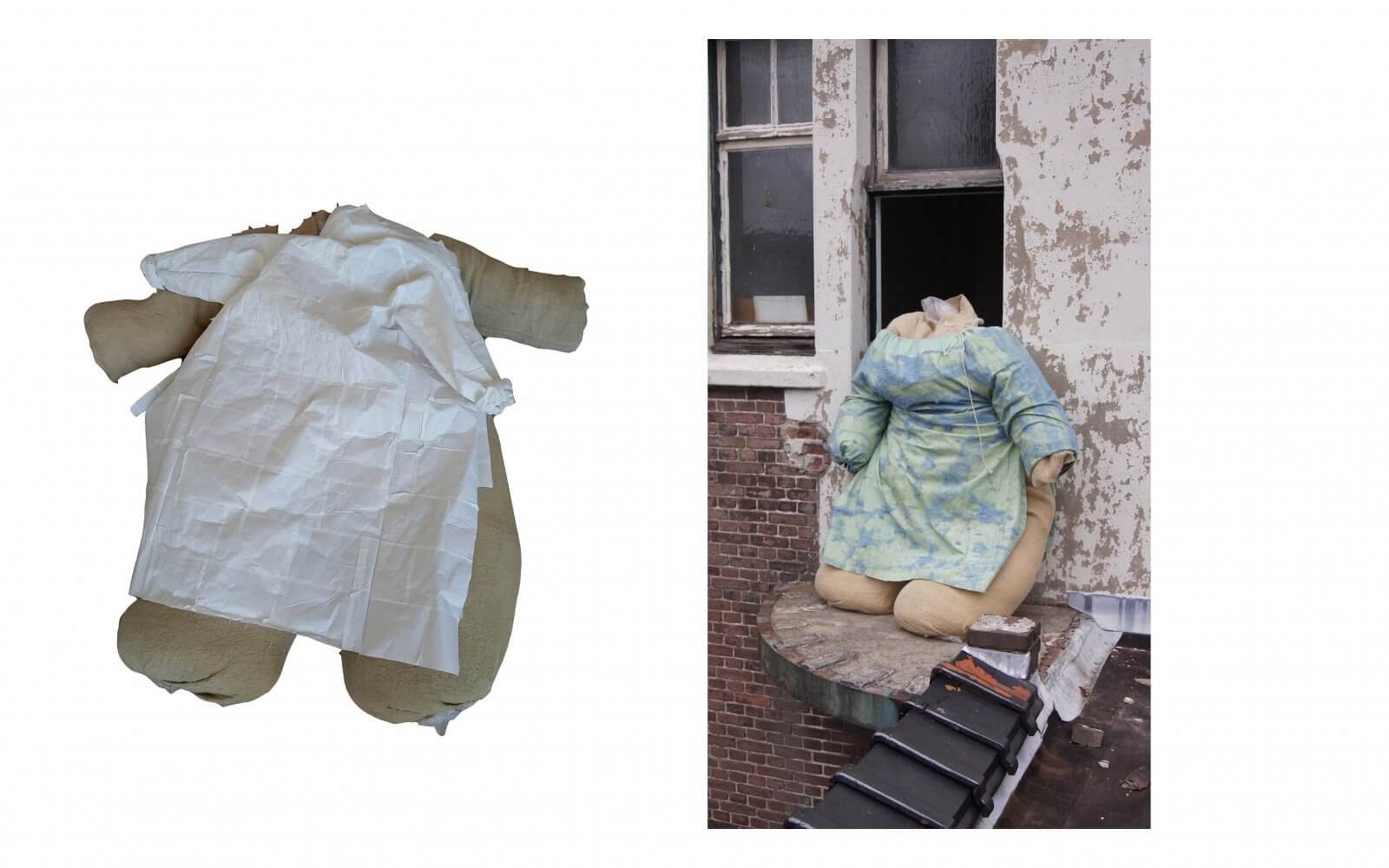
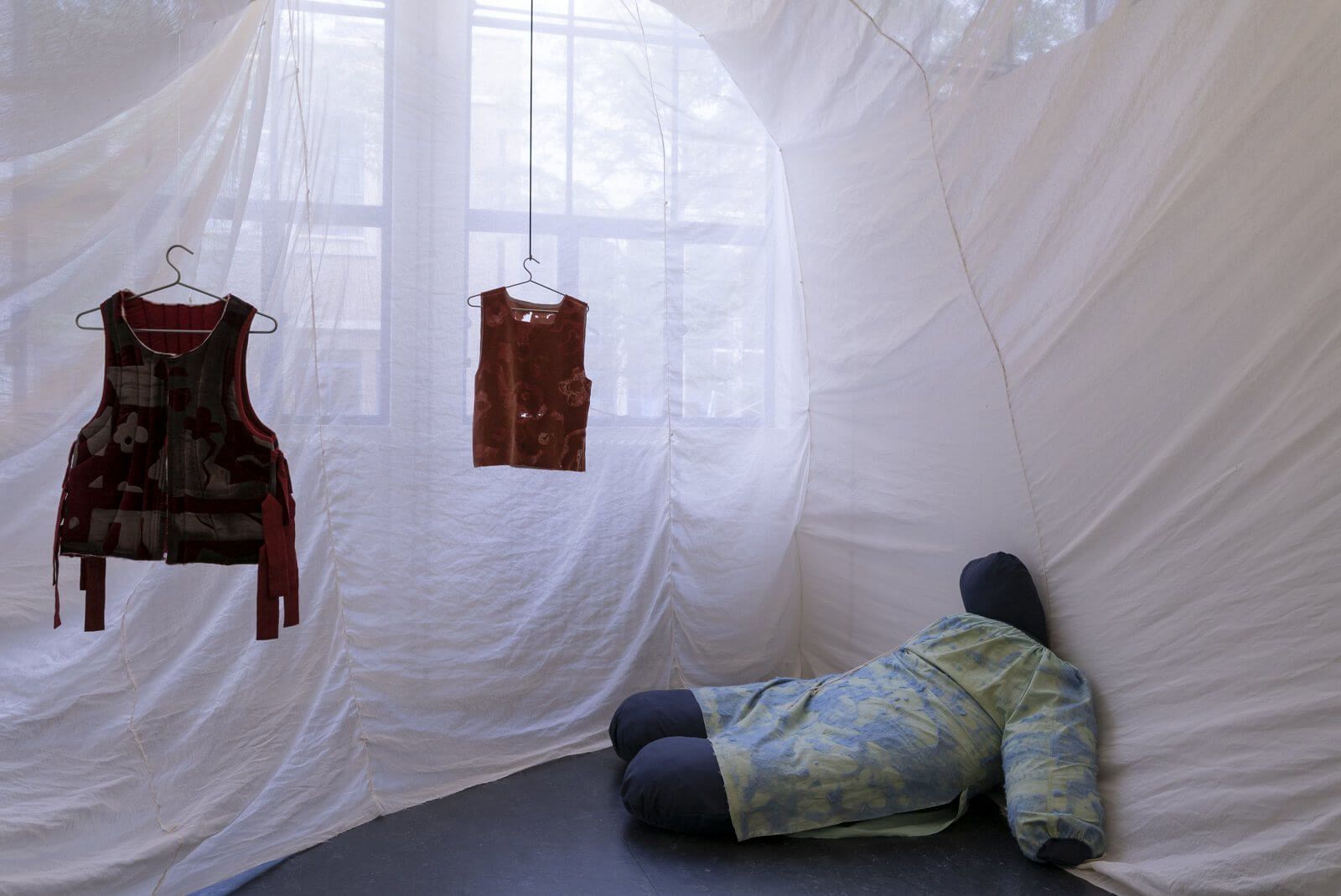
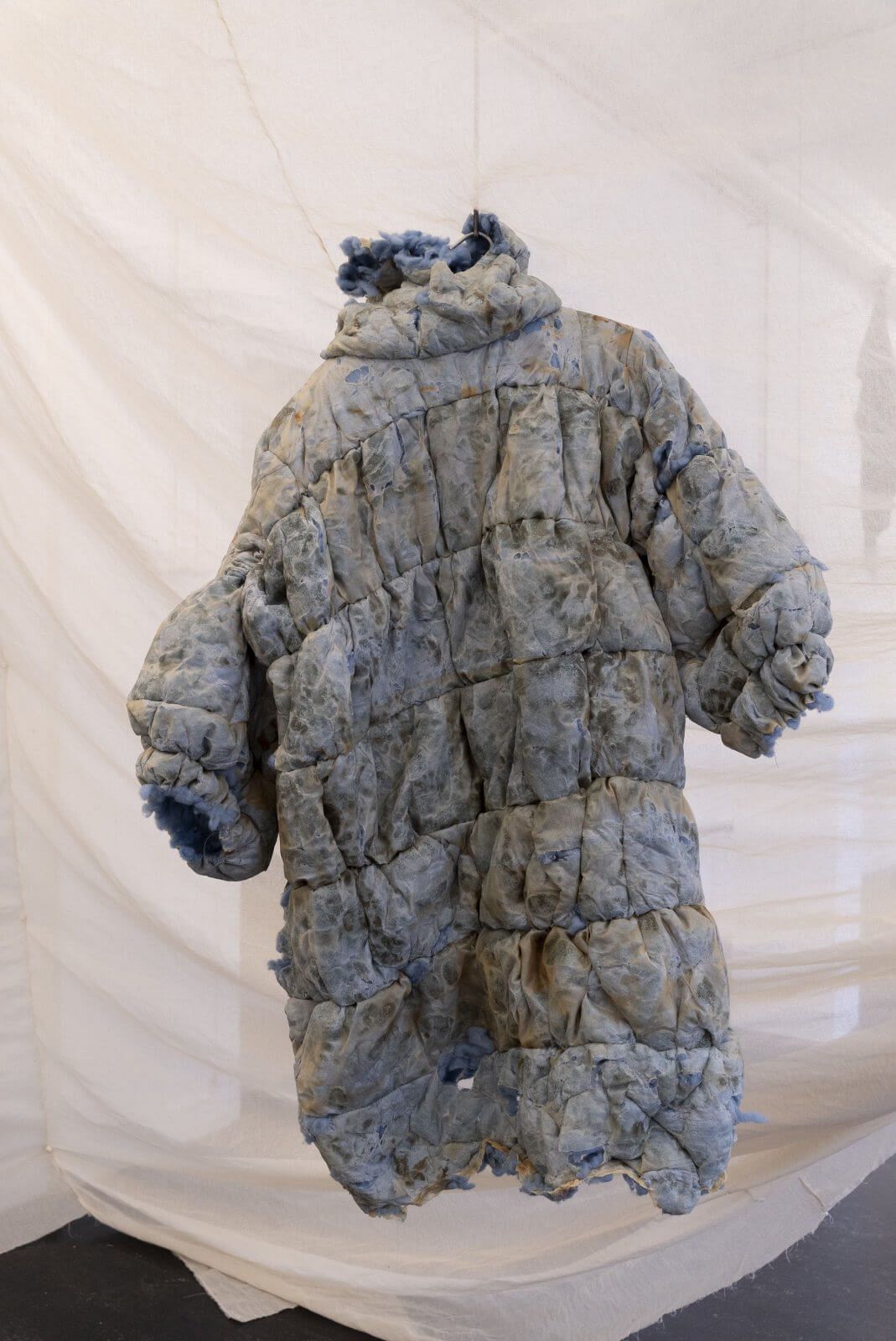

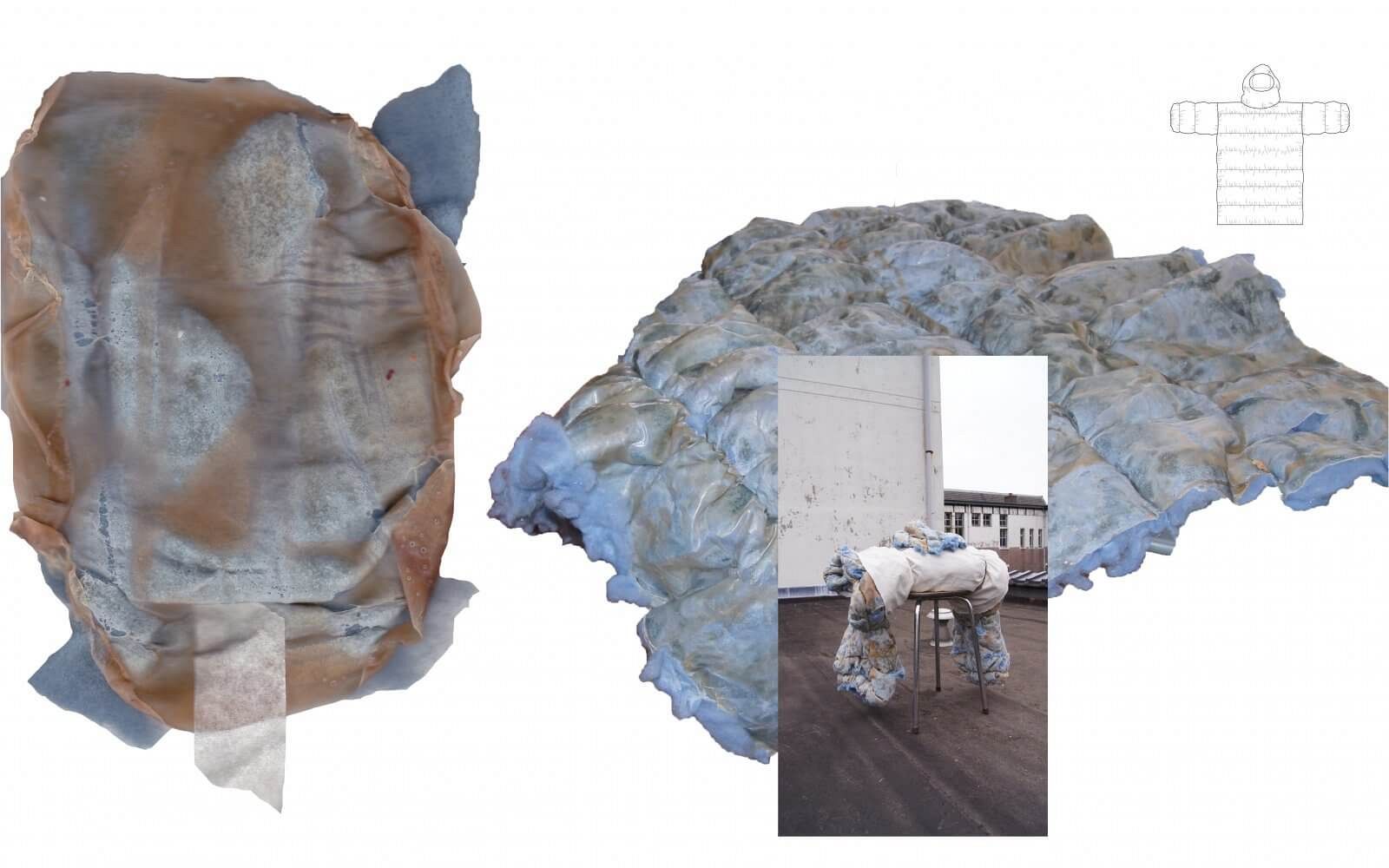
THESIS
The Ambiguous Relationship between Human and Object
In fashion shows nowadays it is impossible to touch the objects that are being shown. This contrasts with how I treat the objects that are being presented at such events. The essay The eyes of the skin by Juhani Pallasmaa seemed like a confirmation of the universal lack of sensory experience and I wondered how this was related to making physical work. The aim of this thesis is then to investigate this relationship between human and object. What is the role of the object, how does it behave, and how does human behaviour change when the role of the object is taken seriously? Also, how do these questions affect our understanding of the difference between clothing and fashion? In today's society, the personal connection with objects, for instance concerning clothing, vanishes into the background. The dominant mode seems to be more about participation, being involved in, and above all the viewing of objects. This ocularcentrism makes our brain want to pick up as much accessible content as possible by scrolling through our timelines and buying new things to belong. Unfortunately, it also ensures that this short moment of satisfaction passes by before you are aware of it. We want too much, too often and too new. Our perception is not only shaped trough events, memories, norms and cultural values, it is also shaped by the action of objects. Like people, objects are beings and actors themselves and can enter into a relationship with people. We should make good use out of the objects to maintain a valuable connection with them. This thesis deals with the problem of visual dominance at the cost of other valuable sensory experiences and the emotional value of an object, illustrated by cases of fashion and clothing.
Graphic design by Liesa Dieterle and Linea Ian Cai Fabricius